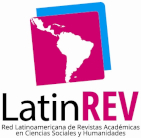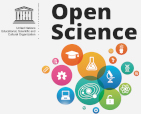Thinking of clay with the body: multimodal metaphoric thought in a pottery workshop
Keywords:
embodied cognition, conceptual metaphor, schematic thought, artistic discourseAbstract
Conceptual metaphors (Lakoff & Johnson, 1980; 1999) shape the conceptualization of one type of experience, generally abstract or difficult to understand (target-domain), in terms of another, usually more basic or simple (source-domain). Multimodal metaphors (Forceville, 2006) emerge from the correlation between a source-domain, which expresses its content in one modality, and a target-domain, in another modality. In this study, part of the project named Pensar las Artes con el Cuerpo (SPI, UPC), we identified and analyzed the schematic thoughts (Mahler, 2023) mapped to the processes carried out by producers of art, crafts and design in the situated context of a pottery workshop. The most outstanding multimodal metaphors are THE PIECE OF POTTERY IS THE TEACHER and THE CLAY IS THE BODY, which articulate the explanations and guidelines. These are followed by THE TEMPERATURE IS VERTICALITY, THE PIECE OF POTTERY IS THE HAND or THE FIST, TOUCHING IS TURNING, THE HANDS ARE TOOLS, KNOWING IS SEEING and THE HEAD IS A CONTAINER, among others. Metaphorical thinking emerges spontaneously and dynamically in the prompts, practice and concept construal, serving different purposes especially dedicated to the construction and circulation of meanings relevant to the specific context of the workshop.
Downloads
References
Forceville, C. (2006). Non-verbal and multimodal metaphor in a cognitivist framework: Agendas for research. En G. Kristiansen, M. Achard, R. Dirven, F. J. Ruiz (Eds.), Cognitive Linguistics: Current Applications and Future Perspectives (pp. 379-402). Berlin: Mouton Reader.
Forceville, C. y Urios-Aparisi, E. (Eds.) (2009). Multimodal Metaphor. Berlín: Mouton de Gruyter.
Halliday, M.A.K. y Matthiessen, C. (2004). Introduction to Functional Grammar (3a ed.). Londres: Arnold.
Johnson, M. (1987). The Body in the Mind: The Bodily Basis of Meaning, Imagination and Reason. Chicago: University of Chicago Press.
Kress, G. (2012). Multimodal discourse analysis. En J. Gee y M. Handford (Eds.), The Routledge handbook of discourse analysis (pp. 61-76). Londres: Routledge.
Kress, G. y Van Leeuwen, T. (2021). Reading images: The grammar of visual design (3ª ed.). Oxon: Routledge.
Lakoff, G. y Johnson, M. ([1980] 2018). Metáforas de la Vida Cotidiana. (3a ed.). Madrid: Teorema.
Lakoff, G. y Johnson, M. (1999). Philosophy in the Flesh: The Embodied Mind and Its Challenge to Western Thought. Nueva York: Basic Books.
Mahler, C. (2021). El paisaje metafórico encarnado en “Las teorías del arte”. Investiga+, 4(4), pp. 25-42. https://revistas.upc.edu.ar/investiga-mas/article/view/61
Mahler, C. (2023). La metáfora y su conceptualización: de la cognición al discurso [tesis doctoral no publicada]. Universidad Nacional de Córdoba.
Pérez, D. I. y Gomila, A. (2022). Social cognition and the second person in human interaction. Londres: Routledge.
Perniss, P. y Vigliocco, G. (2014). The bridge of iconicity: from a world of experience to the experience of language. Philosophical Transactions of the Royal Society B: Biological Sciences, 369(1651), 20130300.
Rosch, E. (1978). Principles of Categorization. En E. Rosch y B. Lloyd (Eds.), Cognition and categorization (pp. 27-48). Hillsdale: Lawrence Erlbaum.
Trevarthen, C. (1998). The concept and foundations of infant intersubjectivity. En S. Braten (Ed.), Intersubjective communication and emotion in early ontogeny. Londres: Cambridge University Press.
Varela, F., Thomson, E. y Rosch, E. ([1991] 1994). De cuerpo presente. Las ciencias cognitivas y la experiencia humana. Barcelona: Gedisa.
Zlatev, J. (2005). What’s in a schema? Bodily mimesis and the grounding of language. En B. Hampe (Ed.), From Perception to Meaning. Image Schemas in Cognitive Linguistics (pp. 313-342). Berlín: Mouton de Gruyter.
Downloads
Published
Issue
Section
License
Copyright (c) 2024 Carolina M. Mahler, Alejandra Perié

This work is licensed under a Creative Commons Attribution-NonCommercial-ShareAlike 4.0 International License.




















